Posts Tagged ‘injuries’
Swimming Pool Accidents Can Be Avoided By Owners’ Safety Steps
 With the warm weather and pool season upon us, we wanted to take a moment to discuss important pool safety precautions to prevent injuries and drowning.
With the warm weather and pool season upon us, we wanted to take a moment to discuss important pool safety precautions to prevent injuries and drowning.
A swimming pool holds many risks for injuries, from defective equipment to unsecured locks. The biggest hazard, of course, is drowning. Drowning is the leading cause of death for young children ages 1 to 4 in the U.S. and the fifth leading cause of unintentional injury death for people of all ages. In children under 15, non-fatal drowning is more common than drowning. Non-fatal drowning happens when the brain loses oxygen due to submersion. This can cause brain damage and long-term disabilities.
In many cases, drowning and other pool-side injuries can be prevented if everyone using your pool is closely monitored at all times and your equipment complies with safety guidelines. The Boston personal injury lawyers at Breakstone, White & Gluck share these tips for pool owners:
Fencing. Residential pools must be secured by a fence at least four-feet tall. More than half of all swimming pool drownings among young children could be prevented by four-sided fencing that separates the pool from the house and yard. The fence should have self-closing and self-latching gates that open outward.
If your house serves as a fourth side of a fence around a pool, install door alarms and always use them.
Pool Alarms. Install pool and gate alarms to alert you when children go near your pool.
Drain Entrapments. Keep children away from drains, pipes and other openings to avoid entrapments. Purchase drain covers that comply with the Virginia Graeme Baker Pool & Spa Safety Act. The federal law covers pools which are open to the public, apartment complexes and hotels, but you can purchase these covers for your residential pool. Ask your local pool supplier or visit PoolSafely.gov.
Diving Boards. Never install a diving board for an above-ground pool. If you install one on your in-ground pool, make sure the water is at least 10 to 12 feet deep. Diving is a leading cause of neck and spinal cord injuries. Check with your insurance agent or insurance broker to see if any special precautions are required under your homeowners insurance policy.
Pool Inspection. Call your pool dealer or local board of health and ask for the name of a pool safety inspector.
Telephone. Always keep a telephone outside near the pool in case of emergency.
Glass. Never allow glass in or near the pool. Broken glass is dangerous in the area around the pool, but even more dangerous in the pool itself where it can be completely invisible. We know from the cases that we have handled that broken glass in a pool can lead to serious personal injuries.
Watch Children Swim. Always make sure someone is watching children swim. Assign at least one adult to the task of watching the children.
Read More
Defective Medication Under Scrutiny After Supreme Court Ruling
A recent Supreme Court ruling is limiting court actions by injured patients who have filed claims against manufacturers of generic drugs.
The ruling was issued last year and said generic drugmakers do not have control over their labels and therefore cannot be sued for failing to alert the public. Under the 1984 Hatch-Waxman Act, generic drugmakers were not required to undergo the Food and Drug Administration’s (FDA) lengthy approval process if they could prove the generic drug was equivalent to the brand-name medicine.
In most cases, the Henry-Waxman Act requires generic manufacturers use the same labels as brand-name drugs, with dosing instructions and risks for injury. For this reason, judges have started to dismiss many product liability lawsuits against generic manufacturers while allowing those against brand-name drugs to move ahead.
In a March 20, 2012 article, The New York Times reported that a woman who had received the brand name for an anti-nausea medication had suffered gangrene – or a condition that results in dead or weakening body tissue. She sued the manufacturer Wyeth and won $6.8 million.
Another woman took the generic version of the defective drug, known as promethazine, and had to have her arm and forearm amputated because of complications from gangrene. Her case was dismissed last fall following the Supreme Court ruling.
The Supreme Court ruling comes as Americans are increasingly turning to generic medicines. As prices skyrocket and the economy struggles, many health insurance companies are requiring generics be filled before brand-name drugs. Doctors are required to show medical needs for the brand name over generic.
As a result, nearly 80 percent of prescriptions in the United States are filled generic and most states permit pharmacists to dispense a generic in place of a brand name.
What Can Consumers Do:
Support efforts to change the law. Public Citizen, a consumer advocacy group, has petitioned the FDA to give generic companies greater control over their labels. The move may allow generic drug users to sue. U.S. Rep. Henry A. Waxman, D-California, is also exploring ways to address the issue.
Talk to your doctor. Ask your doctor about the medicine being prescribed, the generic and potential side effects. If you are still concerned about potential injuries, ask your doctor to call your insurance company and request a brand-name.
Research any medication you use. Write down the name of the medicine you are prescribed, the medicine you receive at the pharmacy and research both drugs. Discuss any side effects with your physician.
Consider foregoing insurance. If you are really concerned and can afford the brand-name prescription, consider purchasing it. There are many discount drug programs which may help you reduce your costs. Check with any groups you are affiliated with, including AAA and AARP.
Contact your health insurance company. If the company has required you to use generic medications, ask if it has changed its policy and is now allowing use of brand-name medications.
Related:
Massachusetts Patients’ Bill of Rights and Preventing Medical Errors.
Medical Device Recall for CooperVision Contact Lenses
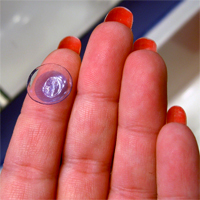 Consumers are advised to stop using a second type of CooperVision’s Avaira contact lenses due to a defect that may result in blurry vision and other eye injuries.
Consumers are advised to stop using a second type of CooperVision’s Avaira contact lenses due to a defect that may result in blurry vision and other eye injuries.
On Nov. 16, an unknown quantity of CooperVision Avaira (enfilcon A) Sphere contact lenses were recalled due to the unintended presence of a silicone oil residue.
CooperVision, a Fairport, NY-company, recalled the lenses in cooperation with the Food and Drug Administration (FDA), which states that the silicone oil residue can result in a wide range of symptoms, including eye discomfort, hazy and blurry vision and eye injuries requiring medical treatment. The FDA regulates contact lenses as a medical device.
The recalled lenses were manufactured from Feb. 1, 2011 to Aug. 24, 2011 and distributed from March 2, 2011 to Nov. 15, 2011.
The contact lenses were used to correct myopia and hyperopia and non-aphakic individuals with non-diseased eyes. The lenses may be worn by individuals who have astigmatism of 2.00 diopters or less that do not interfere with visual acuity.
Lens wearers have been instructed to stop using the lenses immediately and contact their eye care professional. They can visit the CooperVision recall website and enter the defective medical device package numbers to determine if their lenses have been recalled.
The medical device recall expanded another in August 2011 for limited lots of Avaira Toric contact lenses. CooperVision said the product defect on that line has been corrected through its quality system process.
Contact lens injuries are prevalent, due to product defect or improper use. They are most common among children and adolescents. In a study published in the July 2010 Pediatrics, FDA researchers reported 23 percent of total medical device injuries in 2004 and 2005 in the U.S. involved children and contact lenses. Children ages 11 and over were the most affected.
Common personal injuries include corneal contusions and abrasions, hemorrhage and conjunctivitis.
Click to read the FDA notice about the CooperVision recall.
Read More
Decorating Safely for the Holidays
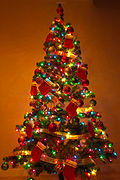 While it is the most wonderful time of the year, the holiday season is also a prime time for home fires.
While it is the most wonderful time of the year, the holiday season is also a prime time for home fires.
In Massachusetts, from 2002 to 2007, Christmas Day saw the second most number of residential fires of any day while Christmas Eve ranked ninth, according to the Office of the State Fire Marshal. The majority of these fires can be prevented with planning and awareness.The Boston injury lawyers at Breakstone, White & Gluck offer these tips to help you and your family enjoy the season safely:
Christmas Tree Watering
- Do not pick up your Christmas tree immediately after Thanksgiving.
- Make sure you have an adequate size tree water stand.
- Learn how much watering your tree needs. In general, you should use one quart of water per day for each stem diameter. Ask your local fire department for more instructions.
- Remove your tree in a timely manner to avoid letting it dry out. Many communities offer special Christmas tree pickups after the holiday.
- Another option is to cut up your tree branches and place them over a garden.
- Do not leave your tree outside unattended overnight for teenagers and vandals to find.
Christmas Tree Holiday Lights
- Keep your tree at least three feet away from flame or heat sources, such as fireplaces and radiators. These pose a fire risk and will dry out your tree faster.
- Never put candles on or near your tree.
- Check your Christmas tree lights for broken bulbs. If one is damaged, remove the whole string to avoid a fire accident.
- Make sure your Christmas tree lights are designed for indoor use.
- Unplug Christmas tree lights when you leave the house or go to bed.
- Check if your Christmas tree lights have been tested for safety by a nationally recognized laboratory. If they have, they will be marked ETL, UL or CSA.
- Do not put too many lights on your tree. Check the box for the appropriate number of strings.
- Place your tree near a power outlet to reduce use of extension cords. Make sure extension cords have been marked UL to show they have been tested.
- If you have an artificial tree, check to see if it has the label “Fire Resistant.”
Holiday Candles
- Use sturdy candle holders with flame-protective and non-combustible shades or globes.
- Never leave burning candles unattended.
- Place burning candles in the center of tables.
- Place burning candles at least four feet away from curtains, bedding and other flammables.
- Keep candles and matches away from children.
- When lighting candles, secure hair and clothing away from candles to prevent injuries.
- If you are lighting multiple candles, make sure you are aware of how much heat they generate.
Dangerous Toy Report Details Lead, Choking Hazards
 For a quarter century, the U.S. PIRG Education Fund (U.S. PIRG) has educated the public about toy safety for the holiday shopping season.
For a quarter century, the U.S. PIRG Education Fund (U.S. PIRG) has educated the public about toy safety for the holiday shopping season.
This year, U.S. PIRG’s “Trouble In Toyland: The 26th Annual Survey of Toy Safety,” warns consumers about over a dozen potentially dangerous toys, including those with dangerous levels of lead, phthalates and cadmium. Other warnings were issued for toys posing choking and strangulation hazards as well as those that create an excessively loud noise. The Boston product liability lawyers at Breakstone, White & Gluck urge you to glance at the report’s findings before you do your holiday shopping:
Toys With Dangerous Lead Limits. Lead has been banned in paint, children’s products and cookware in the United States since 1978, but it remains a problem in toys which are imported from other countries. Between October 2010 and November 2011, nearly 200,000 toys were recalled because of excessive lead limits, U.S. PIRG reported.
This year’s U.S. PIRG review found two toys on the market with lead levels which exceed the current 300 ppm standard, one toy that exceeded the prospective 100 ppm standard and four toys that exceeded the American Academy of Pediatrics recommendation of 40 ppm. This is the limit supported by U.S. PIRG.
Phthalates in Toys. Exposure to phthalates has been linked to have adverse health effects for children in the womb, including premature delivery and reproductive defects. U.S. PIRG identified two toys with limits exceeding the amount allowed by the Consumer Product Safety Improvement Act of 2008. The two toys include the Funny Glasses, manufactured by Joking Around, and the Sleep Mask, manufactured by Claire’s. Both exceed the 1000 ppm of banned phthalate standard.
Cadmium. Cadmium is a frequent additive in children’s jewelry. In response to a legal action in September, retailers agreed to sell only products that have less than 300 ppm cadmium. U.S. PIRG found no cases of noncompliance, but urged the Consumer Product Safety Commission to proceed with setting limits for cadmium in children and toy jewelry.
Choking Hazard. Choking on toys with small parts is the leading cause of toy-related deaths and injuries. Between 1990 and 2010, over 200 children in the United States died from choking.
Toy makers face complex regulations for testing and labeling their products. U.S. PIRG found several violations, including toys with no warning labels indicating they included small parts. The group called on the Consumer Product Safety Commission to take actions such as enlarging the small parts test tube size.
Loud Toys. U.S. PIRG reported several toys on the market exceed the ASTM 2003 standards for sound-producing toys, including Elmo’s World, Talking Cell Phone, manufactured by Fisher-Price; Victorious Stereo Headphones, manufactured by Nickelodeon; and Hotwheels, Super Stunt RAT BOMB, manufactured by Hotwheels.
Our recommendations:
- Shop wisely. If you have small children in the house, avoid toys for your older children which might represent choking hazards for your younger children.
- Avoid products which are obviously intended to generate loud noises or which may have headphones that cannot be turned down.
- Common sense says look for toys that have been on the market for more than a year because they are more likely to have been tested and proven safe.
- Buy toys that will promote physical activities to help your children stay strong and healthy.
To read the full U.S. PIRG “Trouble In Toyland: The 26th Annual Survey of Toy Safety,” click here.
Read More
Cooking a Safe Thanksgiving Dinner
 At Thanksgiving, the focus is on enjoying good food and family. But attention must also be paid to fire safety because Thanksgiving sees more residential fire deaths, injuries and property damage than any other day of the year.
At Thanksgiving, the focus is on enjoying good food and family. But attention must also be paid to fire safety because Thanksgiving sees more residential fire deaths, injuries and property damage than any other day of the year.
These fires are preventable with solid planning and good communication among those who are preparing the meal and others in the home. The Massachusetts personal injury lawyers at Breakstone, White & Gluck of Boston offer these tips to keep your holiday safe:
- Never leave food cooking unattended. If you have to leave the kitchen, turn the stove off or ask someone to watch the food.
- Make sure you have properly working smoke alarms near your kitchen.
- Keep oven mitts, wooden utensils, towels and other materials away from the stovetop.
- Use a timer to remind you when to stop cooking.
- Avoid using candles, especially near young children.
- Make sure cords to electrical tools and appliances, such as electric knives, are not dangling within reach of a child.
- Make sure children stay away from liquids and soft foods such as gravy and vegetables until they cool down. If these foods are too hot, they can cause skin burns.
What To Do If You Have A Cooking Fire
Keep a small fire extinguisher handy in your kitchen, either under the sink or close by in a closet. Inspect it periodically and make sure it is properly charged. If you have a cooking fire, it is best to call 911, wait outdoors for the fire department.
If it’s an oven fire, turn off the heat and keep the door closed. For small grease fires, smother the fire by sliding the lid over the pan and turning off the stove top. Leave the pan covered until it is cool. Never use water to extinguish a grease fire. You could be badly burned.
If you try to put out the fire, be sure everyone else is out of the home and you have a clear exit path.
Read More
Defective Toy Truck Recalled by Fisher-Price
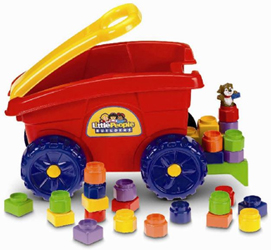 Fisher-Price has recalled a popular toy truck after its plastic handle has been found to pose a laceration risk.
Fisher-Price has recalled a popular toy truck after its plastic handle has been found to pose a laceration risk.
The East Aurora, New York toymaker recalled its Little People® Builders’ Load ‘n Go Wagon in cooperation with the U.S. Consumer Product Safety Commission (CPSC) and Health Canada this week. About 208,000 defective toy trucks were recalled in the United States and 2,800 in Canada. The toy trucks were sold in mass merchandise retail stores nationwide from June 2009 through July 2011 for about $25. They were manufactured in Mexico.
The toy truck is being recalled because its plastic handle has molded-in reinforcement. If a child falls on it, he could suffer a laceration.
The CPSC and Fisher-Price are aware of seven reports of personal injuries. Five reports came from children requiring surgical glue or stitches.
Consumers affected by the Fisher-Price recall can call 800-432-5437 or visit www.service.mattel.com for a free repair kit. The recall involves the wagon with the model number P8977. More information is available on the Mattel website.
Product recalls and deaths related to unsafe toys have declined in recent years, but toy-related injuries have been increasing. In 2009, 186,000 children under 15 were treated for toy-related injuries in emergency rooms, up from 152,000 in 2005.
In 2009, 12 children under 15 suffered wrongful deaths involving defective toys, a 50 percent decrease over the two prior years. Meanwhile, in 2010 there were 44 toy recalls, a significant drop from 172 in 2008.
The CPSC offers a few tips for parents: purchase age-appropriate toys, include safety gear whenever you buy sports equipment and ride-on toys and always be aware of your child’s location during play. Parents should also closely inspect toys prior to giving them to children.
Read More
New Crib Safety Standards Ban Sales of Drop-Sides
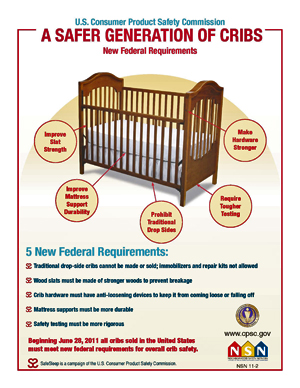 The Consumer Product Safety Commission (CPSC) has implemented comprehensive new safety standards for baby cribs. The standards ban the sale of dangerous drop-side cribs and improve safety testing to prevent infant strangulation deaths.
The Consumer Product Safety Commission (CPSC) has implemented comprehensive new safety standards for baby cribs. The standards ban the sale of dangerous drop-side cribs and improve safety testing to prevent infant strangulation deaths.
The regulations took effect this week after the recall of over 11 million unsafe cribs since 2007. Over the past decade, at least 32 infants have suffered suffocation and strangulation deaths in defective baby cribs.
The CPSC is calling the new regulations the “most stringent crib safety standards in the world.” The standards are important for parents to learn because the CPSC reports that even cribs without drop-sides are unlikely to meet the new standards.
The standards work to prevent infant deaths in several ways. In addition to banning the manufacturing or sale of drop-side cribs, the standards strengthen mattress supports and crib slats, make testing more rigorous and require crib hardware to have anti-loosening devices.
All importers, distributors, manufacturers and retailers must comply with the regulation immediately. Many large retailers such as Target and Walmart say they have already stopped selling drop-side cribs.
Certain businesses using cribs have a grace period for compliance: in-home child care services, child care facilities, rental companies and public accommodations such as hotels.
The CPSC said parents who want to keep using drop-side cribs can contact their manufacturer and ask if they offer an immobilizer. These devices secure drop-sides to prevent the crib from separating and causing an infant injury.
Parents with other types of cribs are urged to check their cribs as well. One of the reasons other cribs are unlikely to comply is the new standards require stronger wood and other materials. Parents who continue to use their existing cribs are urged to monitor recalls on the CPSC website at www.cpsc.gov.
Read More
Grill Safely This Independence Day
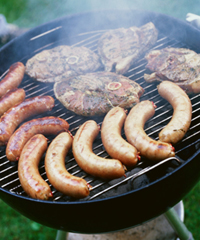 As families across the country celebrate Independence Day this weekend, many will enjoy tasty barbeques.
As families across the country celebrate Independence Day this weekend, many will enjoy tasty barbeques.
Family gatherings should be fun, but grilling can be dangerous without proper safety precautions. Each year, an estimated 3,800 people in the U.S. are treated in emergency rooms for burns, carbon monoxide poisoning and other injuries related to grilling, according to the Consumer Product Safety Commission (CPSC).
Grill safely with our tips for your holiday cookout:
- At the start of each season, inspect a gas grill’s hoses for signs of cracking, holes and evidence of animal bites or insects. Replace damaged parts.
- Make sure the grill is clean before using. Regularly clean it throughout the season as described in the owner’s manual.
- Always use grills outside.
- Never leave a grill unattended.
- Keep children away from the grill area. The outside surface of a grill can burn a children’s hands.
- If a grease fire occurs, turn off the gas grill and use baking soda or a fire extinguisher to put out the blaze.
- Never store or use flammable liquids such as gasoline near a grill.
- Check the CPSC website to make sure you are not using a recalled grill.
Charcoal Grill Safety
- There are several ways to start a charcoal grill, including starter fluid, charcoal chimney starters and electric charcoal starters. Choose one method and become knowledgeable about it before starting your grill.
- If you use a starter fluid, use only charcoal starter fluid. Never add charcoal fluid or any other flammable liquids to the fire.
- Store charcoal starter fluid out of reach of children and away from heat sources.
- When you are finished grilling, let the charcoals completely cool before disposing them in a metal container.
Propane Tank Grilling Safety
- Transport your propane tank to the refill station or hardware store in a standing position. Use a box or order a special carrying case. Do not let passengers hold the tank. Do not do other errands when you are getting your propane tank filled.
- Never take a propane gas tank inside the refill facility or your home because of the risk for a gas explosion.
- Be sure the propane tank valve is closed when you disconnect it from the grill. Newer propane tanks have a safety device that will prevent gas flow from the tank when it is disconnected. But it is still a good idea to make sure the valve is closed.
- When you connect your propane tank to your grill, if you see fog or smell gas, it is a sign of a leak. This means there is a risk for a gas explosion. Stop what you are doing, move your family away from the property and contact your local fire department.
- Another way to test for a propane tank leak before each season is to open the gas supply valve fully. Apply a soapy solution with a brush at the connection point. If bubbles appear, there is a leak. Try tightening the tank’s connection to see if the leak stops or contact a qualified gas professional.
Attention on Amusement Park Injuries
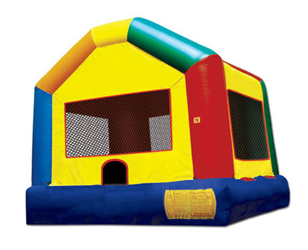 The winds that lifted three inflatable bounce houses and injured 13 people in New York this weekend have put the focus on amusement ride safety as summer begins.
The winds that lifted three inflatable bounce houses and injured 13 people in New York this weekend have put the focus on amusement ride safety as summer begins.
A gust of wind picked up the inflatable bounce houses with children playing inside in Oceanside on Long Island. Parents and bystanders ran after the inflatable houses, trying to pin them to the ground but were knocked over. Eventually the houses came to the ground on their own.
Adults and children were transported to the hospital, but no one was seriously injured.
The incident follows two similar situations in Arizona. In February, an inflatable bounce house blew over a fence and onto a roof with two girls inside. One girl was seriously injured while the other suffered minor injuries. In April, four children were injured when the inflatable jumping castle they were playing in lifted up in a dust devil. The inflatable castle blew across a busy Tucson highway and landed in the median.
In March 2010, a five-year-old boy died after falling from an inflatable ride at a Wichita, Kansas entertainment complex.
The Consumer Product Safety Commission reports that between 2003 and 2007, 31,069 people went to the emergency room after being injured on inflatable amusement rides, including bounce houses and slides. Of these, 85 percent of those injured were under the age of 15. Injuries often occur when inflatables get unhinged or there are users of different sizes.
Amusement rides and backyard toys are a staple of summer, but have come under scrutiny for their safety risks in recent years. In 2004, a 38-year-old man was killed on an amusement park ride at a Shrewsbury, Massachusetts church fair. Two other people suffered personal injuries.
The Massachusetts Department of Public Safety investigated the amusement ride death and found that the man’s lap restraint was defective. The state found other riders had complained about the restraint in the days prior to the death.
The state faulted the ride’s operator, Jaro Amusements, for not keeping proper maintenance records. The employee who supervised the ride was charged with manslaughter and received 2 1/2 years probation. The victim’s family filed a wrongful death lawsuit against Jaro Amusements, the supervisor and other parties.
What to Know About Amusement Park Safety
- All amusement park rides must be inspected annually.
- Do not visit amusement parks or use inflatable rides in windy or rainy weather.
- When waiting in line for a ride, check the equipment. Are riders wearing seat belts and other safety equipment? Listen to people exiting the ride to hear if they complain about the equipment. If you have a bad feeling, step out of line.
- Amusement riders have a responsibility to exercise good judgment. This means obeying verbal instructions and warnings from ride operators, not riding under the influence of alcohol and drugs and not disabling safety devices.
- If you are injured on an amusement ride, the operator must report it to the state Department of Public Health. This includes injuries caused by small rented inflatable rides used at backyard birthday parties and other events.
What to Know About Rented Inflatable Amusement Rides
- If you are renting an inflatable device or other amusement ride, ask the owner when it was last inspected.
- Carefully inspect the rented piece of equipment for excessively worn and damaged materials. Do not accept it in poor condition.
- Listen carefully to the set-up instructions provided by the company renting the device.
- Limit the number of users at one time to avoid injuries.
What to Know About Backyard Trampoline Safety
Backyard trampolines may look fun, but they come with dangers. In 2008, trampoline injuries sent an estimated 100,000 victims to emergency rooms with serious injuries such as spinal cord injuries, broken bones and head injuries. In some cases, victims have been permanently paralyzed.
- Never let children jump on the trampoline without adult supervision.
- Children under the age of 6 should never use a trampoline. The journal Pediatrics calls children this age “top-heavy” and said when they fall on trampolines, they often suffer head injuries.
- Only one person should jump at a time.
- Do not allow flips or somersaults. The Consumer Product Safety Commission reports this is one of the leading causes of trampoline injuries.
- Install safety netting around the trampoline, but advise users the netting does not mean they can do flips or other unsafe maneuvers. Carefully explain they cannot bounce off it in any way.
- Cover the trampoline’s steel rim and springs with a safety pad so users do not fall through the openings. Do not allow people to sit on the safety pad.
- Users should step onto the trampoline and step off. They should never jump off. This could lead to trampoline accidents.
- Follow the manufacturer’s recommendations for when to replace parts. Different parts have different lifespans and failure to replace could result in serious personal injury.

